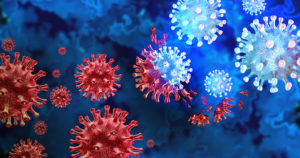
Dozens of recent autopsies show persistent evidence of SARS-CoV-2 throughout the body, including in the lungs, heart, spleen, kidneys, liver, colon, thorax, muscles, nerves, reproductive tract, eyes, and the brain. In one particular autopsy, remnants of the novel coronavirus were found in the brain of a deceased patient 230 days after they first started showing symptoms.
In the past, autopsies on those who have contracted COVID-19 have shown preliminary signs of multi-organ spread, with genetic remnants of the virus showing up in a myriad of tissues, organs, and fluids. Researchers suggest their newest findings are the most comprehensive analysis to date on the cellular persistence of SARS-CoV-2 in the human body.
The study involved 44 autopsies, in which researchers carefully detected and quantified the level of messenger RNA from SARS-CoV-2 in 85 locations and fluids. This genetic information is indicative of where the virus might have been replicating during a person’s life.
Read more about the study and its findings here.
